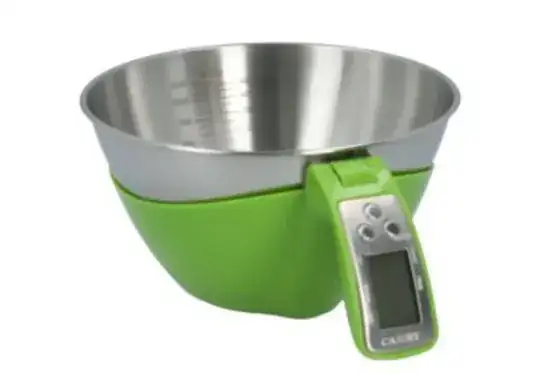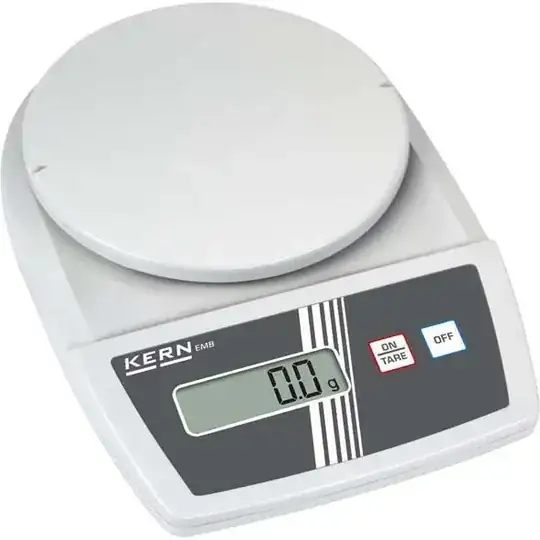Get a flat one.
You can put a bowl on the flat one & use tare weights*, or even negative weights (put a full pack of something on it then spoon out -150g etc.
The one that's got a built-in bowl has you locked into that system.
It also takes up a whole lot more space.
Personally, I like the completely flat, single surface, glass-topped ones. The glass can be scratched if you're not careful with rough ceramic bases etc, but it's pretty tough & very easy to wipe clean. The more 'fiddly' the top is, the harder it is to keep clean.
From comments
Some cheaper scales apparently cannot do negative weights - which is something I would very much miss. Apparently all modern Salter scales can do this - & as their entry-level is about $£€ 12 & even an expensive one is only about $£€ 30-40 I'd pick one of theirs at whatever suits your price-point. Not expensive for what is essentially a lifetime purchase.
*For sake of completeness, tare weight means you can re-zero the scales at any time - so you can put a bowl on, then zero. Add 50g flour, re-zero… saves you having to keep a running total in your head if you've a complex recipe.
To do negative weights you put a full pack on the scale, zero it then remove the required weight, which will then show as minus figures down from zero - again avoiding any complicated calculation.
Another very neat trick with the tare function is you can weigh 50g flour, then add 'an egg' re-tare & add 140ml water or even 'half a pint', just by swapping units after you press tare. It makes the whole structure very flexible.
Late edit
There is some debate as to whether you want totally flat, or with a sloped display so you can put a bigger bowl on it & still see the numbers. Also, whether you can read the display in low light.
Mine is large enough for every bowl I own. Until this cropped up I'd never even thought of ever putting a plate on it, but yes, that might be an issue.
Mine has a large LED display, so room lighting is not a factor.
Of course, you want one you can always reach the buttons even when loaded.
I suppose, TL:DR
You want anything except one that forces you into always using their bowl ;)
Last note - the 'flat' one in your picture looks like it curves away at front and back. Avoid that too - it makes the useable surface much smaller than it looks.


